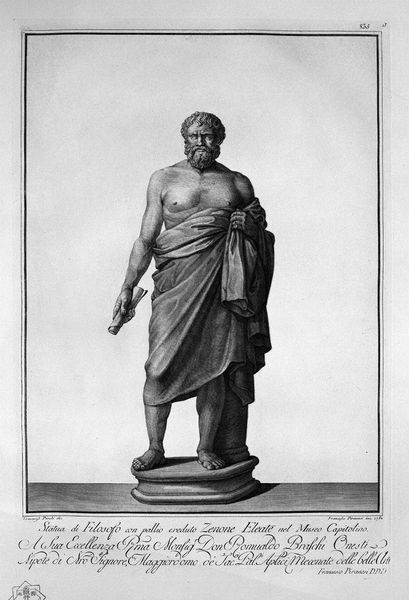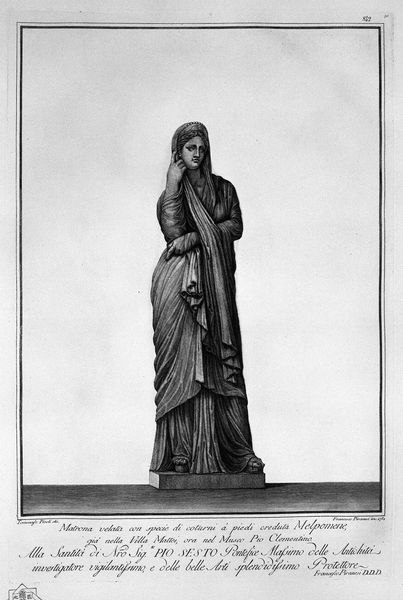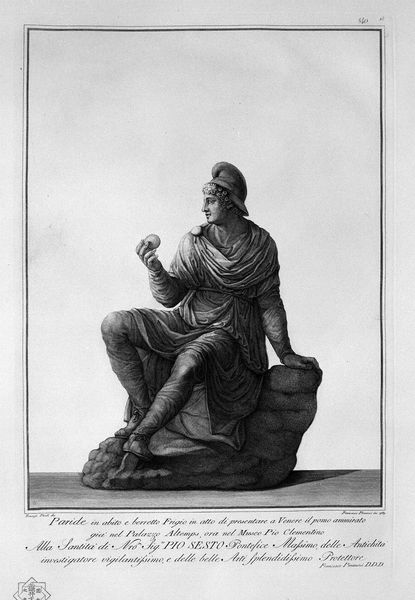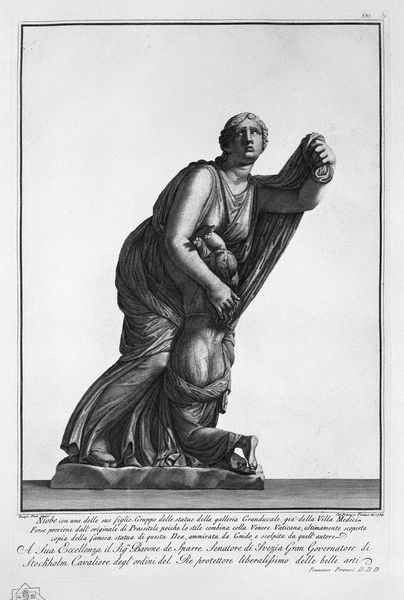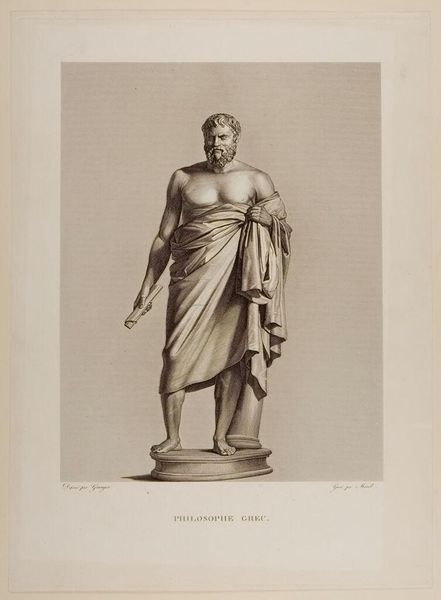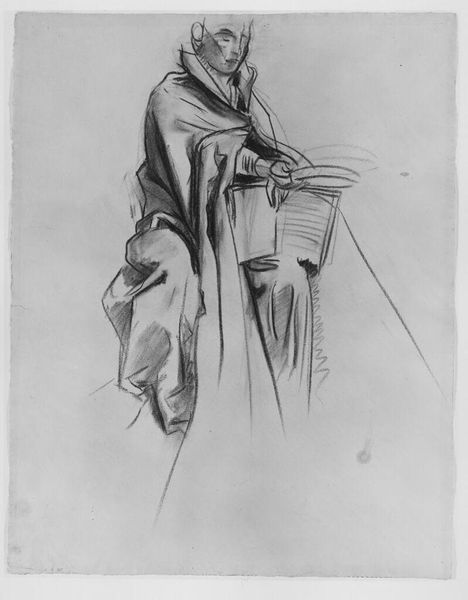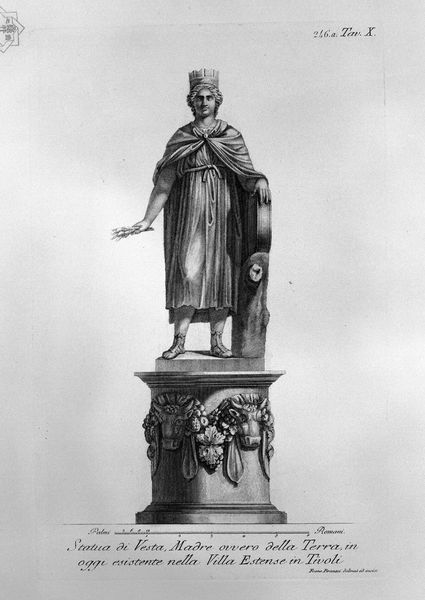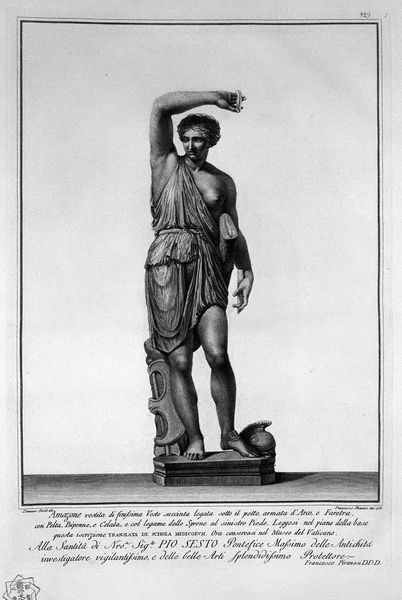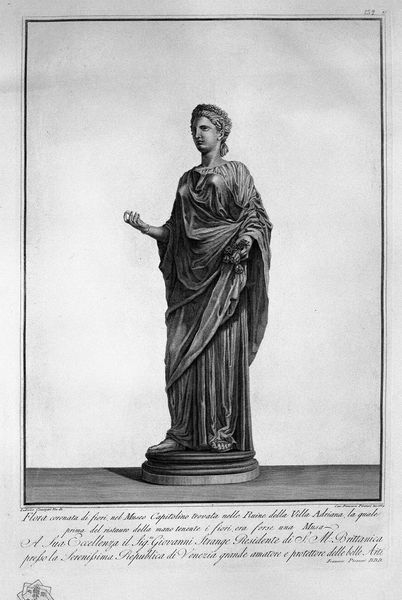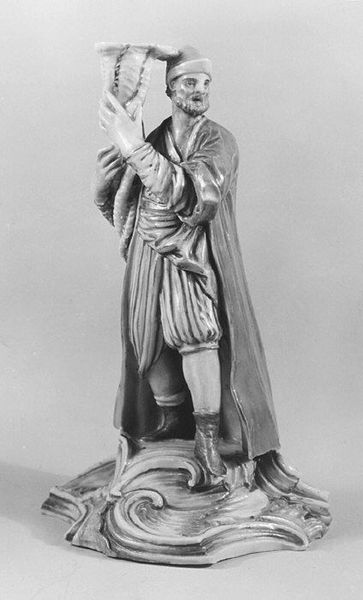
print, engraving
#
portrait
#
statue
# print
#
figuration
#
romanesque
#
classicism
#
engraving
Copyright: Public domain
Editor: This print is called "The burial statue" by Giovanni Battista Piranesi. The image depicts a rather serious figure, draped in cloth and leaning thoughtfully on a funerary marker. There's a lot of intricate detail in the engraving. How do you interpret this work, especially considering Piranesi’s other engravings? Curator: Indeed. Looking closely, we can consider how Piranesi uses line to delineate form and texture. Notice how the hatching varies in density to create a sense of volume and shadow. This emphasizes the weight and monumentality of the statue, wouldn't you agree? It's also crucial to recognize how the formal composition leads the eye, from the inscriptions to the face of the depicted figure. Editor: I see what you mean. The way the light falls really emphasizes the drapery. What about the figure’s posture; what does it evoke for you? Curator: Precisely, his pensive pose, with his finger to his chin, immediately draws attention. Semiotically, it references the philosophical ideal rooted in antiquity, whilst also conveying that idea of memory and reflection pertinent to funerary art. It merges the physical materiality of the engraved statue with the idea it portrays, namely mortality and remembrance. Editor: That’s fascinating. I hadn't considered how deeply embedded classicism is here. I see that Piranesi balances pure representation of form and evokes a deeper contemplation about the theme and topic. Curator: Exactly. The genius of Piranesi, evident through his engraving, is how he invites viewers to engage both with the artwork’s structure, and ponder mortality, a common subject during the Romanesque era. What a master! Editor: Yes, seeing how line and form come together to create something greater helps me to appreciate it so much more.
Comments
No comments
Be the first to comment and join the conversation on the ultimate creative platform.

